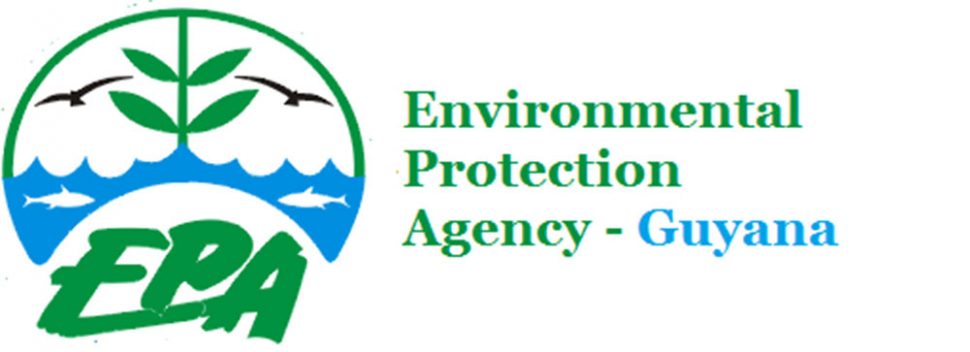Ahead of planned “public hearings” on the waiving of the impact study requirements for the new Demerara Harbour Bridge project and the Exxon-led drilling campaign in the Canje Block, environmentalist Simone Mangal-Joly has reminded that the Environmental Protection Agency (EPA) is still to fulfil its legal obligation to provide the technical reasons for the decisions.
As a result, Mangal-Joly has informed the Environmental Assessment Board (EAB), which is reviewing the decisions, that both it and the EPA should meet the legal thresholds prior to holding the hearings.
Mangal-Joly made her position known in responses to invitations by EAB Chairman Omkar Lochan to attend the meetings on the waivers for the drilling and bridge projects, , which are scheduled for Tuesday, October 12, and Thursday, October 14, respectively.
“A credible EAB hearing to adjudicate can only occur after all the prerequisites are met,” Mangal-Joly wrote in her letter, dated October 8, 2021, in response to the proposed hearing on the Public Works Ministry’s application for an environmental permit for the construction and
operation of the new Demerara Harbour Bridge.
According to the project description, the bridge will span the Demerara River from Nandy Park to La Grange, upstream and in proximity to the existing harbour bridge. The structure will be a fixed four-lane bridge with a vertical clearance over the channel of approximately 50 metres above the maximum tide level. The proposed design allows for the bridge to be connected to the main road network through road approaches connecting it to the West Bank Public Road and the imminent Mandela to Eccles road, respectively.
In her letter, which was seen by Sunday Stabroek, Mangal-Joly points out that Section 11(2) (a) of the Environmental Protection Act requires that the EPA provides the technical reasons for its decisions at the time that it publishes a decision on whether an Environmental Impact Assessment (EIA) is required, and that it provides 30 days from that time for the public to properly assess the reasons and appeal the process if necessary. In addition, Section 11(1) (iv) also provides that the EPA publishes a non-technical summary. However, she notes that neither of these requirements have been met.
As a result, Mangal-Joly said she hoped that the planned October 12 hearing is not to inform the EPA’s decision on whether an EIA should be required. “A public hearing for adjudication of technical matters cannot reasonably or legally serve as a process of discovery of the relevant project information and the EPA’s reasons, affording the public only limited real time responses at the event,” she added, while pointing out that the law clearly gives the public 30 days to consider the facts of the project as well as the EPA’s rationale for its decision.
Up to the time of her writing, she said, the public was still unaware of the EPA’s reasoning as well as proposed activities, including the project size and investment, the length of the construction time, the specific geographic footprint of the project, activities that comprise the construction phase as opposed to the operation phase, specific types of wastes that would be generated, the extent of forests that would be removed or otherwise impacted and whether they include protected species such as mangroves, hydrological studies of potential changes in the river during both construction and operation phases, the impacts on communities or stakeholders on either side of the river or downstream, and the impacts on downstream livelihoods, such as fishing and berthing access for petroleum supply boats.
In light of this, Mangal-Joly asked Lochan to indicate the timeline in which the EPA intends to meet the statutory requirements to trigger the 30-day deliberation period. “I shall be pleased to engage in an EAB public hearing on the technical rationale for the EPA’s decision after both the EPA and EAB have met the prerequisite logical and legal thresholds,” she added.
Similarly, in relation to the hearing on the waiver granted for the drilling campaign in the Canje Block, Mangal-Joly reminded that the EPA did not provide any reasons for its decision to forgo an EIA for the project. “How exactly does the EAB propose that I address whether EPA’s reasons justify its decision to not require an EIA when the EPA still has not disclosed those reasons?” she questioned in her letter, which was also seen by this newspaper.
Having indicated that she would be happy to participate once the EAB and the EPA meet the necessary thresholds, she asked when the public can expect that the reasons would be published and what the EAB expects to achieve with the proposed hearing.
ExxonMobil’s local affiliate, Esso Exploration and Production Guyana Limited (EEPGL), has submitted an application for environmental authorisation for a 12-well Exploration and Appraisal Drilling Programme in the Canje Block, offshore Guyana.






